Analytical and Experimental Study on Cold-Formed Steel Built-Up Sections for Bending
Abstract
1. Introduction
2. Material and Methods
2.1. Analytical Investigation
2.2. Selection of Section
2.3. Connection Requirements
2.4. Finite Element Modeling Boundary and Loading Conditions
2.5. Results of Analytical Study
2.6. Buckling Mode and Stress Distribution of the Specimen
2.6.1. Specimen B2B100
2.6.2. Specimen F2F100
2.6.3. Specimen B2B157
2.7. Ultimate Load Carrying Capacity
2.8. Load-Deflection Behavior
3. Experimental Setup
3.1. Experimental Results
3.2. Buckling Modes of the Specimen
3.3. Load–Deflection Behavior
3.4. Ultimate Load Carrying Capacity
4. Results and Discussions
4.1. Comparison of Ultimate Load-Carrying Capacity
4.2. Comparison of Load versus Deflection Curve
5. Conclusions
- B2B157 is the most effective section among the proposed built-up beams, according to analytical and experimental data.
- The fabricated section B2B157 has a load-carrying capacity that is 21.6 percent higher than B2B100 for the same quantity of material.
- Load-carrying capability is improved by increasing the bolt spacing within permissible limits.
- The ANSYS software-based finite element model accurately predicts the strength and behavior of the beams. As a result, the finite element analysis may be utilized to predict the flexural member’s load capacity with a high confidence level. While designing cold-formed steel beams, local, distortional, bending, web buckling, and lateral-torsional buckling must be considered.
- The addition of a stiffened element at the web area and edge stiffeners at the flange significantly improves the flexural strength and behavior of the beams.
Author Contributions
Funding
Institutional Review Board Statement
Informed Consent Statement
Data Availability Statement
Conflicts of Interest
References
- AISI-S100; North American Specification for the Design of Cold-Formed Steel Structural Members 2007 EDITION. American Iron and Steel Institute and Canadian Standards Association: Canada; USA, 2007.
- Cheng, Y.; Schaferb, B.W. Simulation of cold-formed steel beams in local and distortional buckling with applications to the direct strength method. J. Constr. Steel Res. 2006, 63, 581–590. [Google Scholar]
- Muftah, F.; Mohd Sani, M.S.H.; Mohd Kamal, M.M. Flexural Strength Behaviour of Bolted Built-Up Cold-Formed Steel Beam with Outstand and Extended Stiffener. Int. J. Steel Struct. 2019, 19, 719–732. [Google Scholar] [CrossRef]
- Li, Q.Y.; Young, B. Experimental study on cold-formed steel built-up section beam-columns experiencing non-uniform bending. Eng. Struct. 2022, 256, 113954. [Google Scholar] [CrossRef]
- Pastor, M.M.; Roure, F. Open cross-section beams under pure bending I. Experimental investigations. Thin-Walled Struct. 2008, 46, 476–483. [Google Scholar] [CrossRef]
- Pastor, M.M.; Roure, F. Open cross-section beams under pure bending II. Finite element simulation. Thin-Walled Struct. 2009, 47, 514–521. [Google Scholar] [CrossRef]
- Zhao, Y.H.; Sun, G.J.; Lu, L.; Zhu, J. Comparative analysis of stiffening style of cold formed thin-walled channel steel members. In Proceedings of the 7th International Conference on Modelling, Identification and Control (ICMIC 2015), Sousse, Tunisia, 18–20 December 2015. [Google Scholar]
- Ghannam, M. Bending Moment Capacity of Cold-Formed Steel Built-Up Beams. Int. J. Steel Struct. 2018, 19, 660–671. [Google Scholar] [CrossRef]
- Manikandan, P.; Thulasi, M. Investigation on cold-formed steel lipped channel built-up I beam with intermediate web stiffener. Int. J. Adv. Struct. Eng. 2019, 11, 97–107. [Google Scholar] [CrossRef][Green Version]
- Manikandan, P.; Sukumar, S. Behaviour of Stiffened Cold-Formed Steel Built-up Sections with Complex Edge Stiffeners under Bending. KSCE J. Civ. Eng. 2015, 19, 2108–2115. [Google Scholar] [CrossRef]
- Magnucki, K.; Paczos, P.; Kasprzak, J. Elastic Buckling of Cold-Formed Thin-Walled Channelbeams with drop flanges. J. Struct. Eng. 2010, 136, 886–896. [Google Scholar] [CrossRef]
- DolamuneKankanamge, N.; Mahendran, M. Behaviour and design of cold-formed steel beams subject ssto lateral–torsional buckling. Thin-Walled Struct. 2012, 51, 25–38. [Google Scholar] [CrossRef]
- Bai, Y.; Nardi, D.C.; Zhou, X.; Picón, R.A.; Flórez-López, J. A new comprehensive model of damage for flexural subassemblies prone to fatigue. Comput. Struct. 2021, 256, 106639. [Google Scholar] [CrossRef]
- Huang, H.; Yao, Y.; Liang, C.; Ye, Y. Experimental study on cyclic performance of steel-hollow core partially encased composite spliced frame beam. Soil Dyn. Earthq. Eng. 2022, 163, 107499. [Google Scholar] [CrossRef]
- Zhang, W.; Liu, X.; Huang, Y.; Tong, M.N. Reliability-based analysis of the flexural strength of concrete beams reinforced with hybrid BFRP and steel rebars. Arch. Civ. Mech. Eng. 2022, 22, 171. [Google Scholar] [CrossRef]
- Huang, H.; Huang, M.; Zhang, W.; Yang, S. Experimental study of predamaged columns strengthened by HPFL and BSP under combined load cases. Struct. Infrastruct. Eng. 2020, 17, 1210–1227. [Google Scholar] [CrossRef]
- Mousavi, A.A.; Zhang, C.; Masri, S.F.; Gholipour, G. Structural damage detection method based on the complete ensemble empirical mode decomposition with adaptive noise: A model steel truss bridge case study. Struct. Health Monit. 2021, 21, 887–912. [Google Scholar] [CrossRef]
- Liu, C.; Zhao, Y.; Wang, Y.; Zhang, T.; Jia, H. Hybrid Dynamic Modeling and Analysis of High-Speed Thin-Rimmed Gears. ASME. J. Mech. Des. 2021, 143, 123401. [Google Scholar] [CrossRef]
- Gu, M.; Mo, H.; Qiu, J.; Yuan, J.; Xia, Q. Behavior of Floating Stone Columns Reinforced with Geogrid Encasement in Model Tests. Front. Mater. 2022, 9, 980851. [Google Scholar] [CrossRef]
- Feng, Y.; Zhang, B.; Liu, Y.; Niu, Z.; Dai, B.; Fan, Y.; Chen, X. A 200-225-GHz Manifold-Coupled Multiplexer Utilizing Metal Wave guides. IEEE Trans. Microw. Theory Tech. 2021, 69, 5327–5333. [Google Scholar] [CrossRef]
- Meza, F.J.; Becque, J.; Hajirasouliha, I. Experimental study of cold-formed steel built-up beams. J. Struct. Eng. 2020, 146, 04020126. [Google Scholar] [CrossRef]
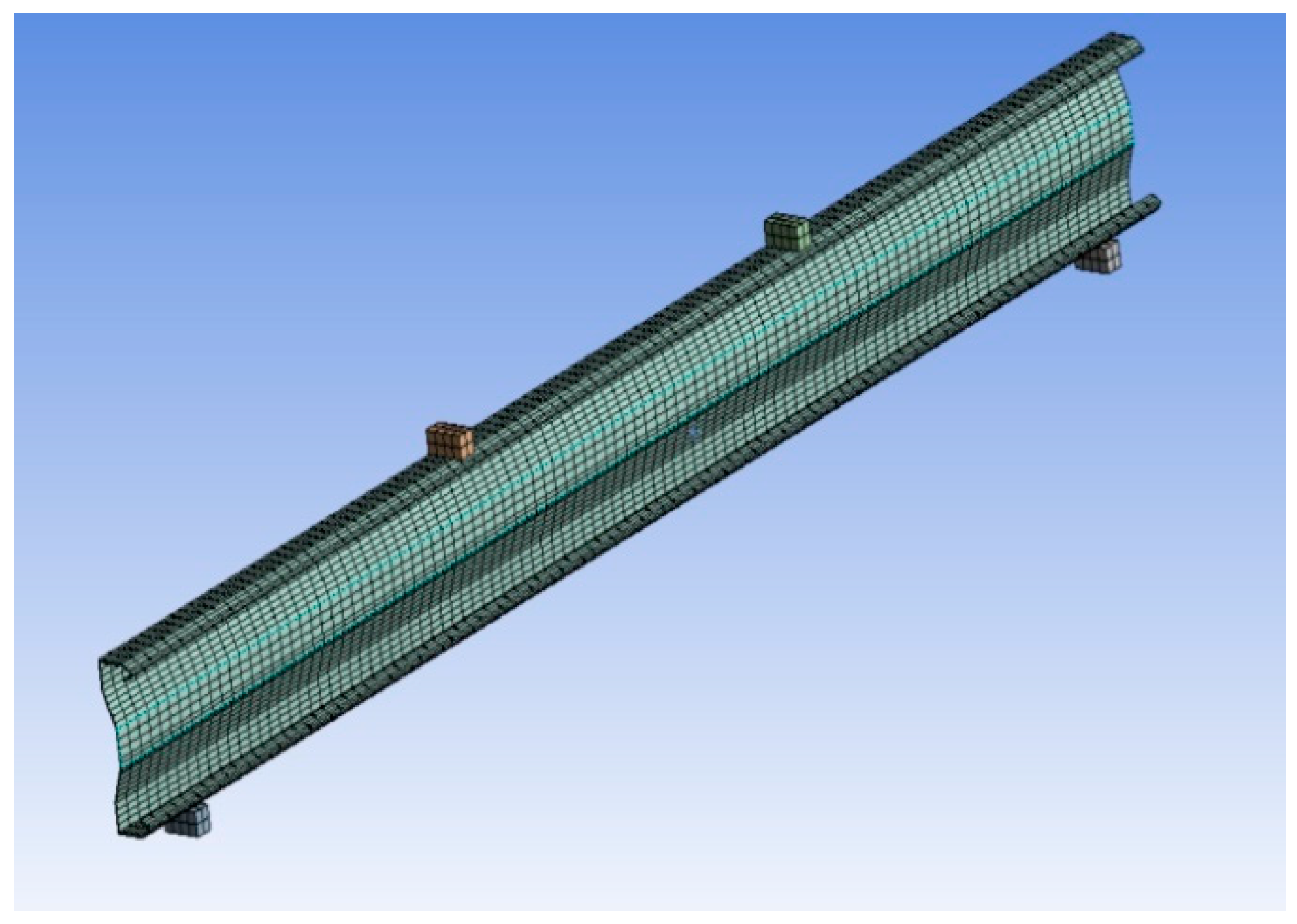
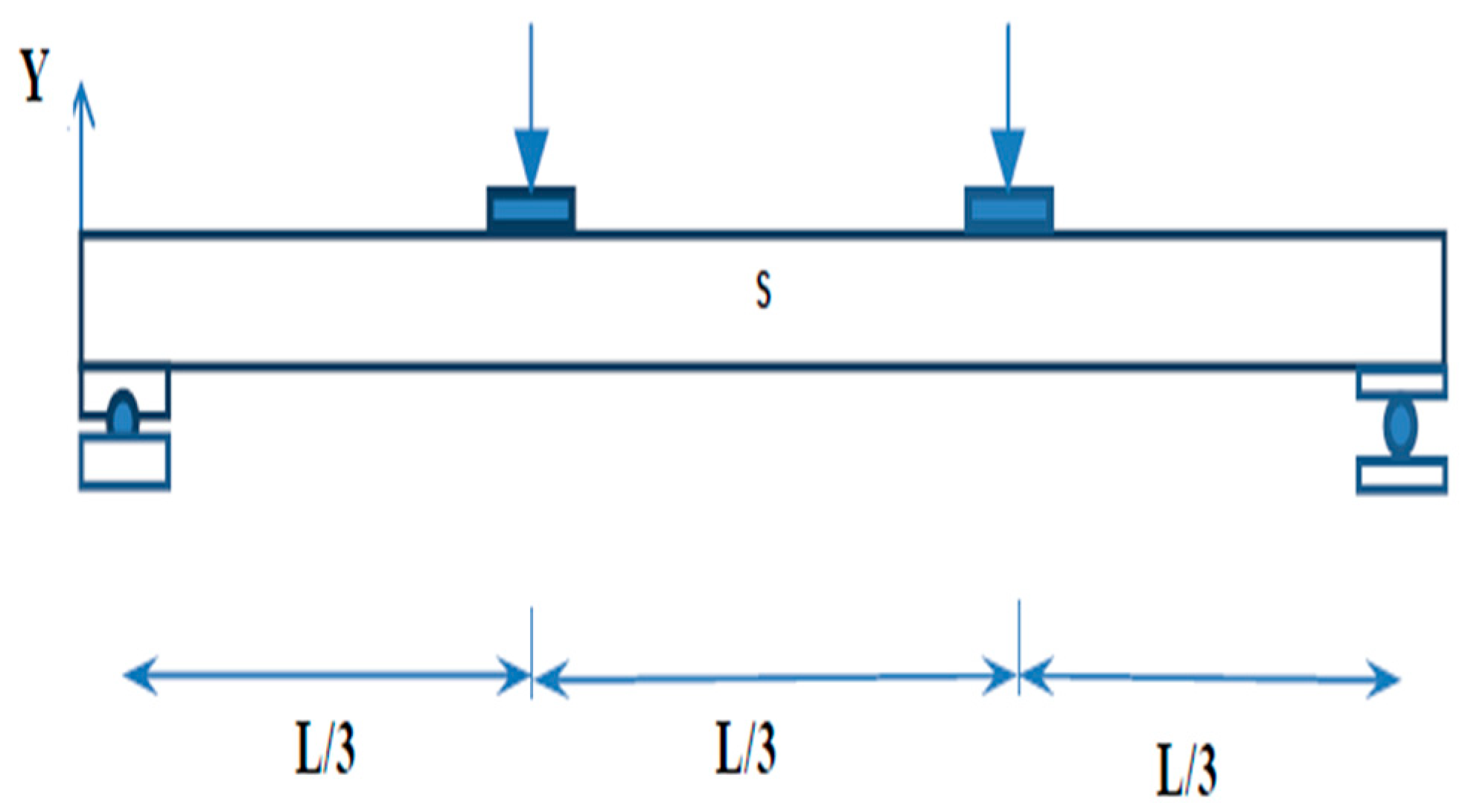
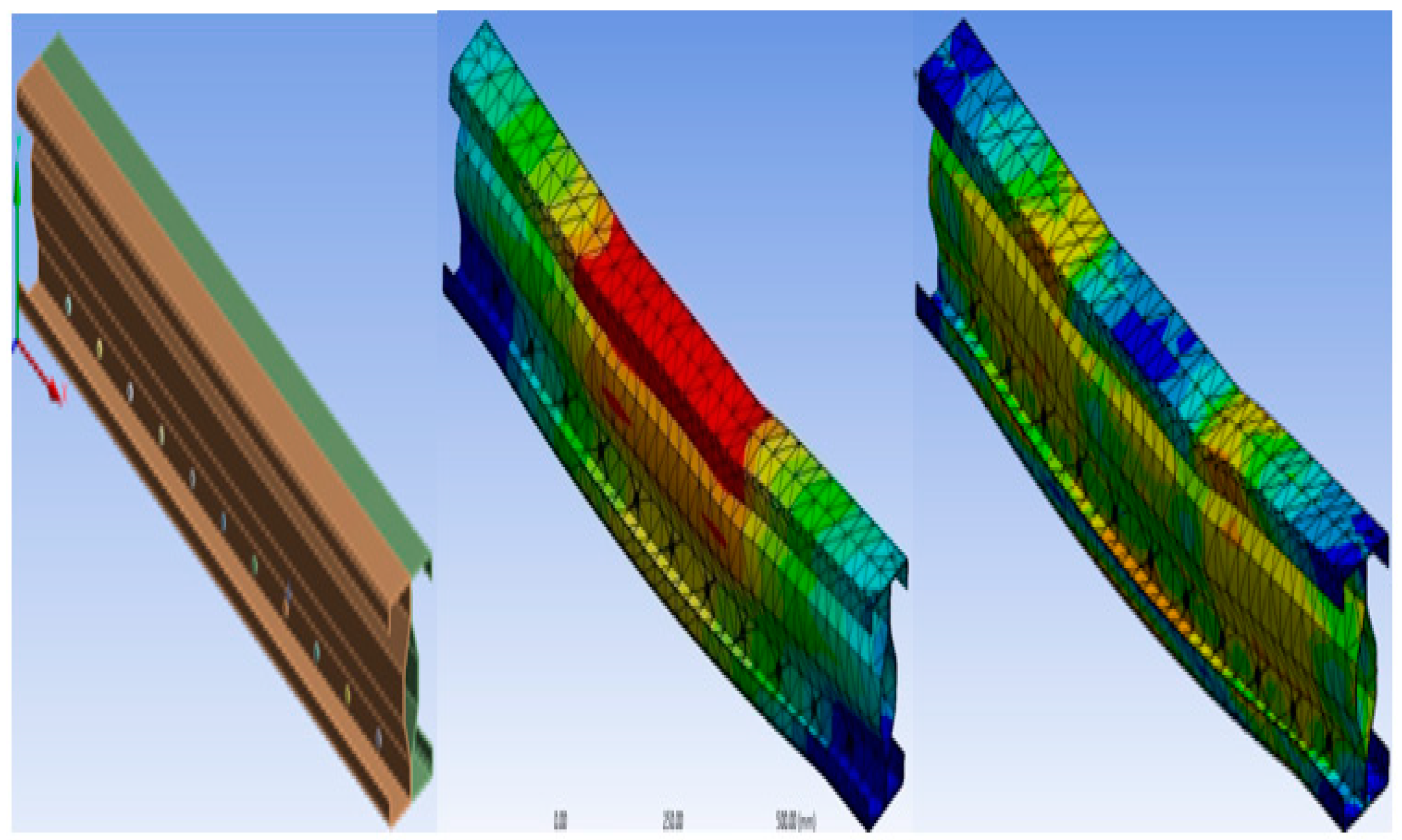
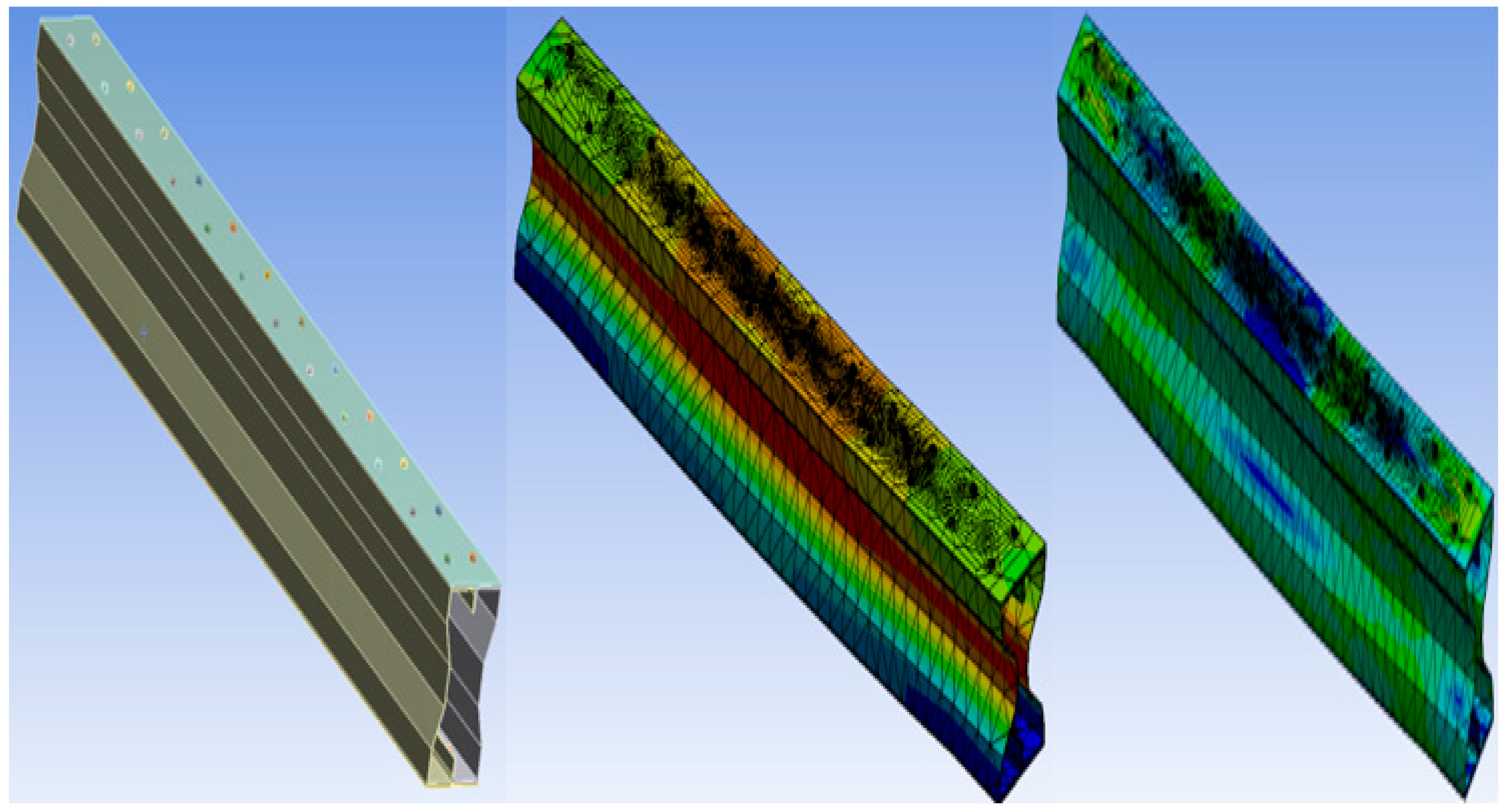
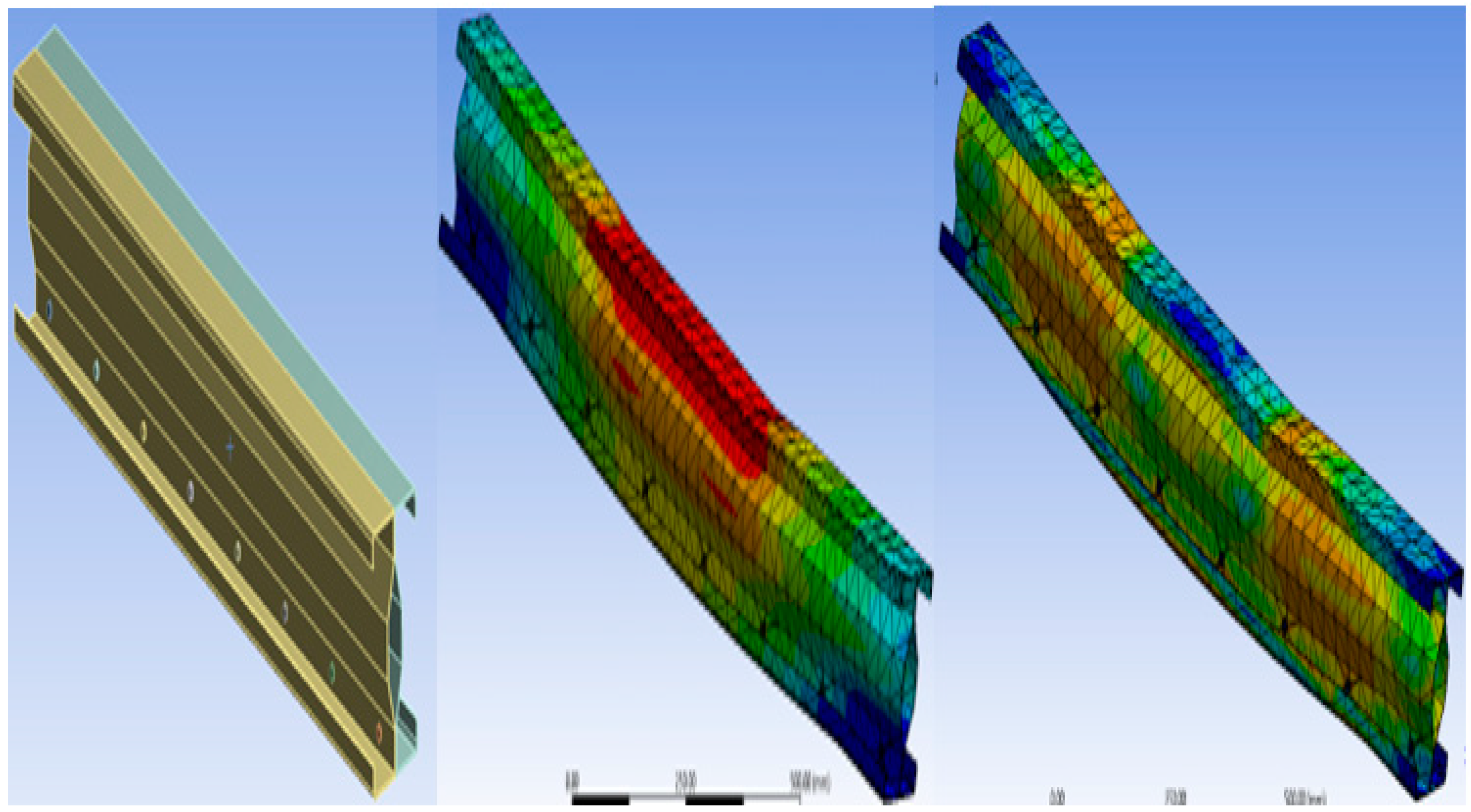
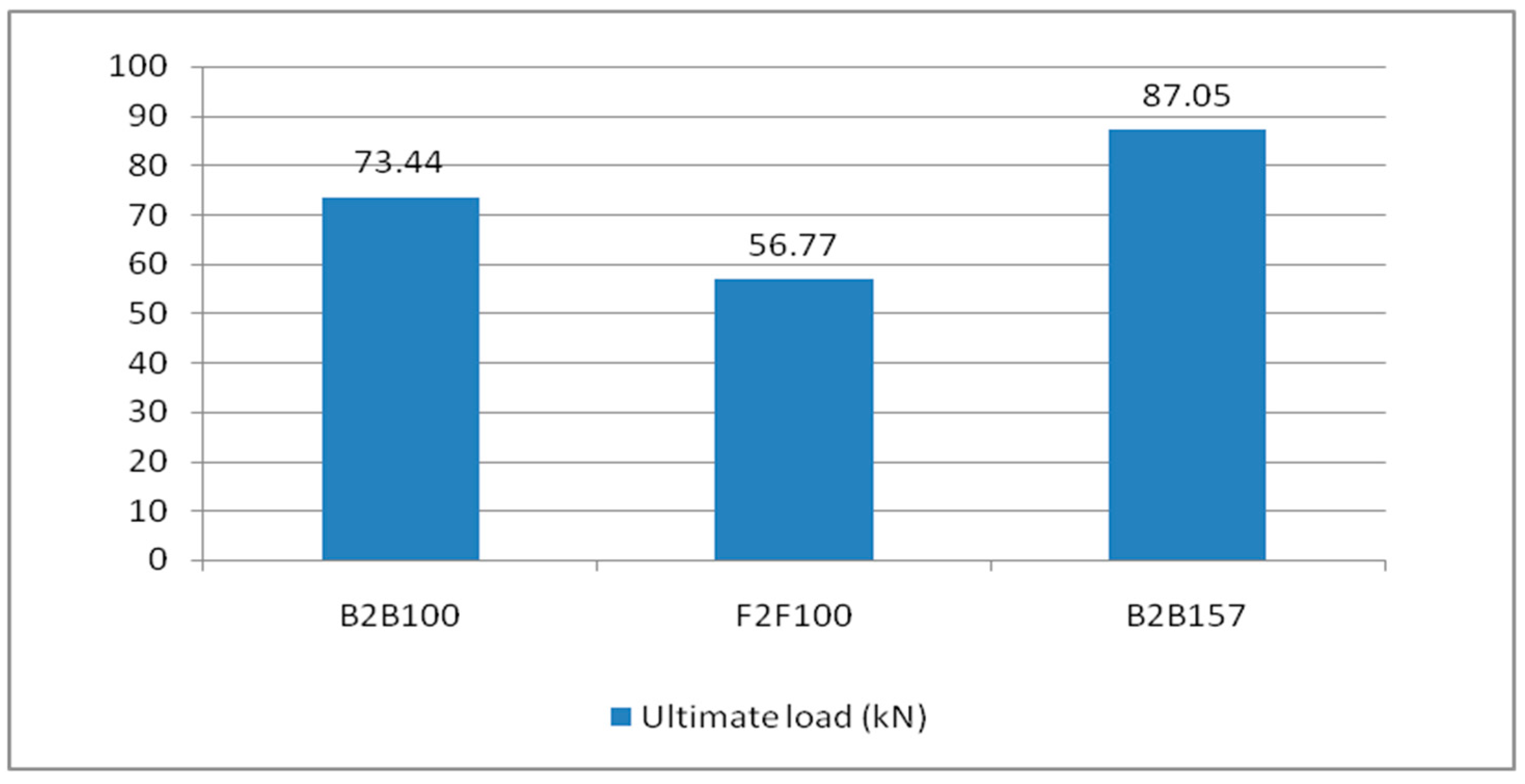

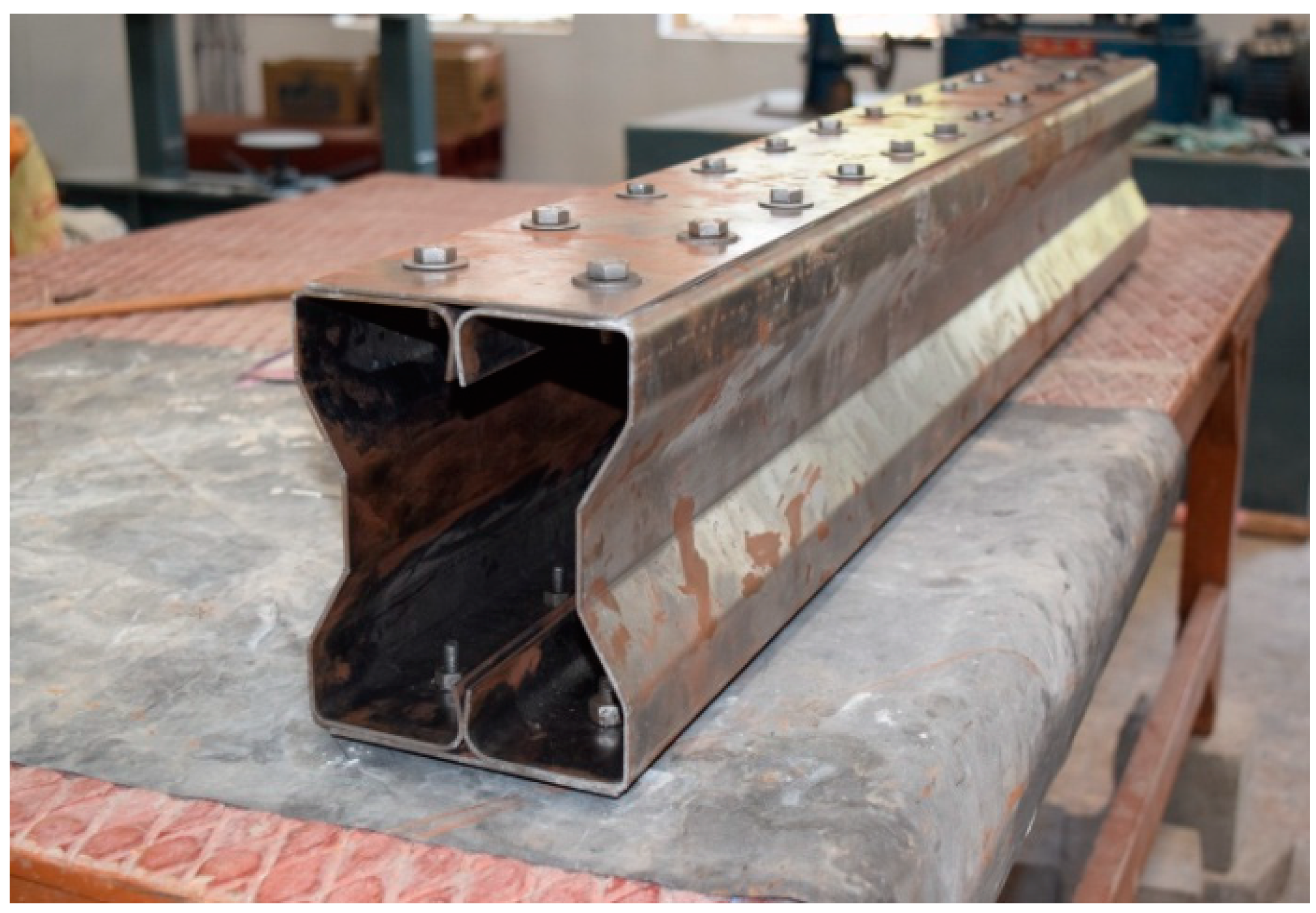

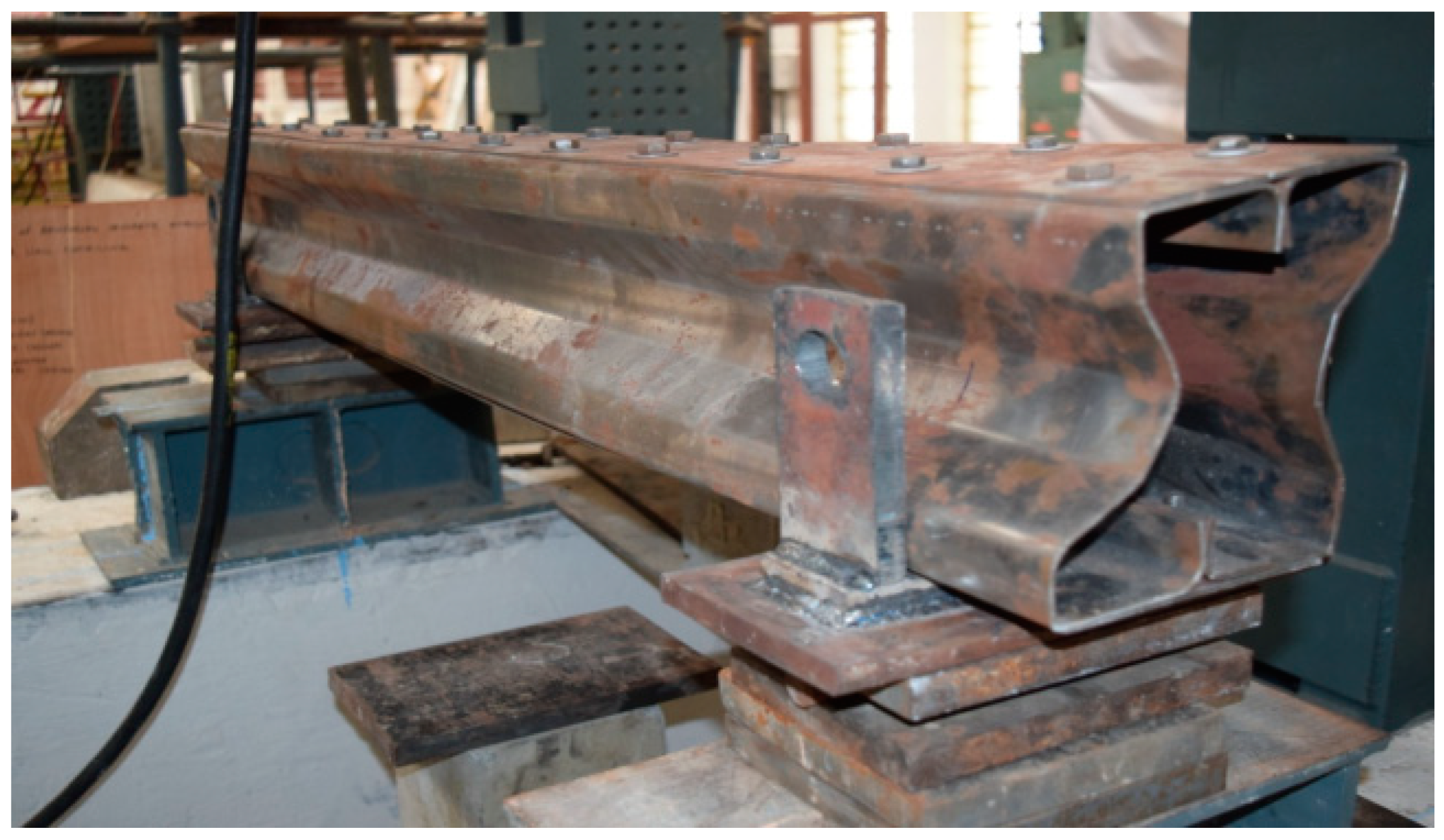
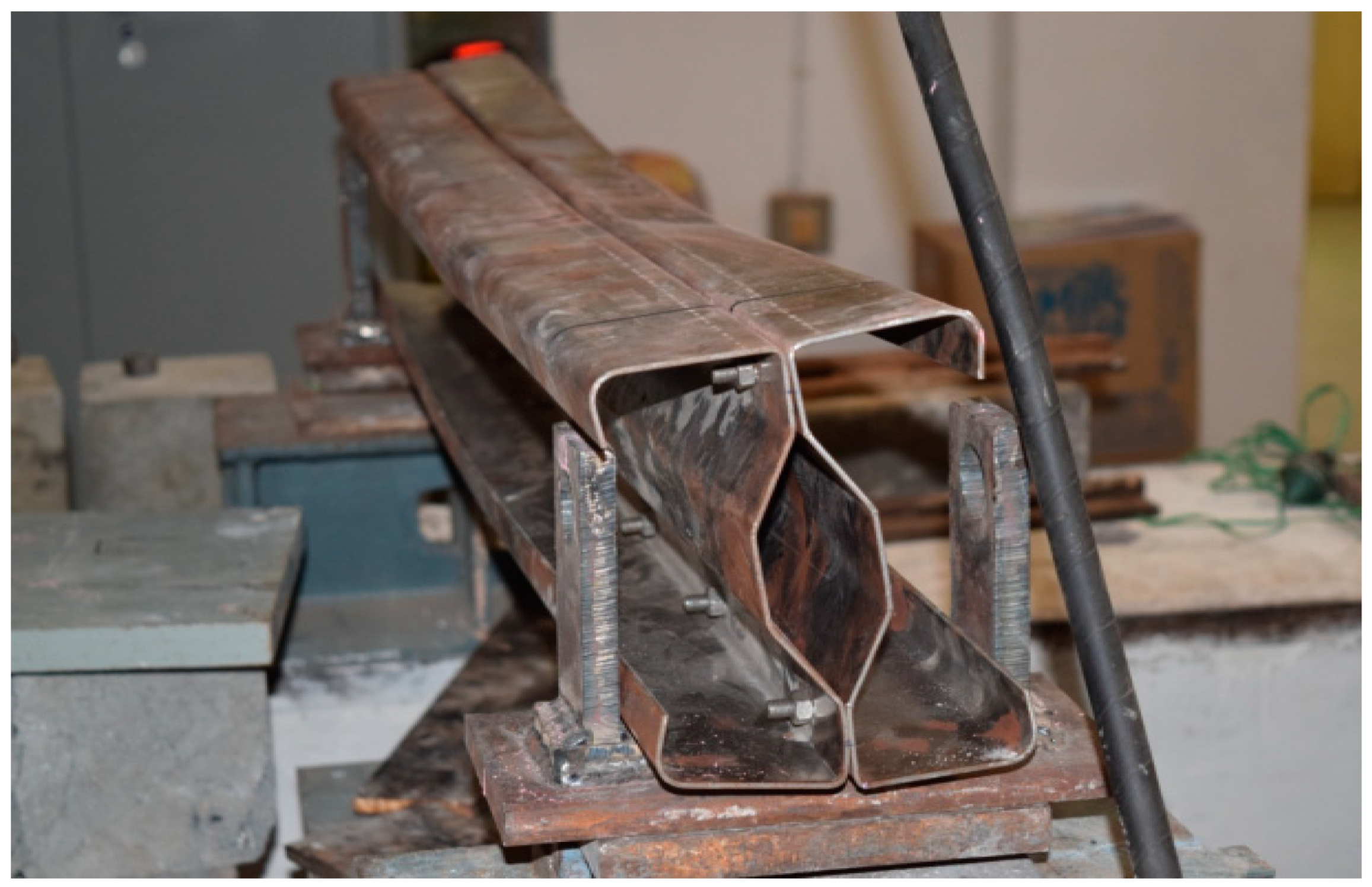
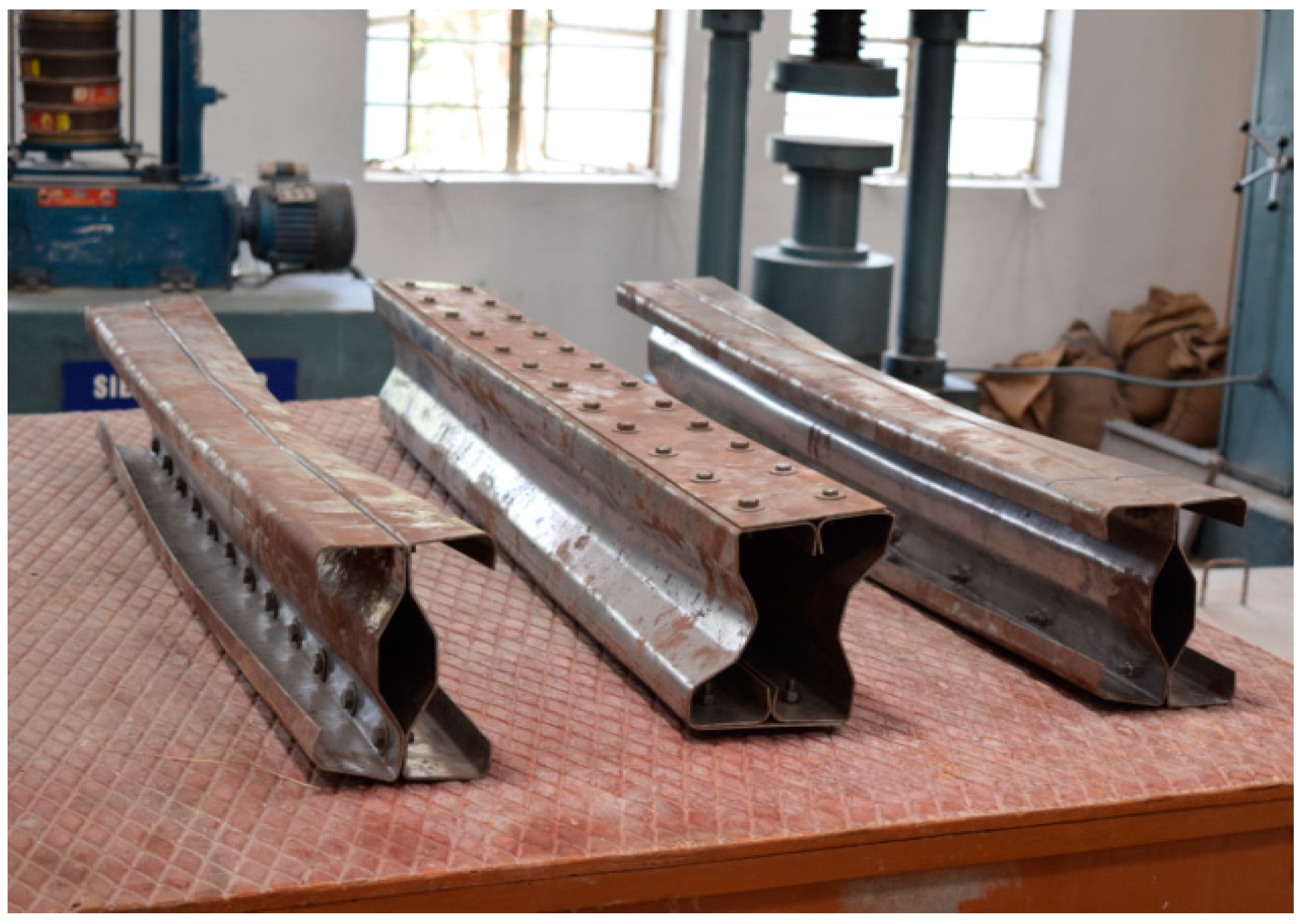

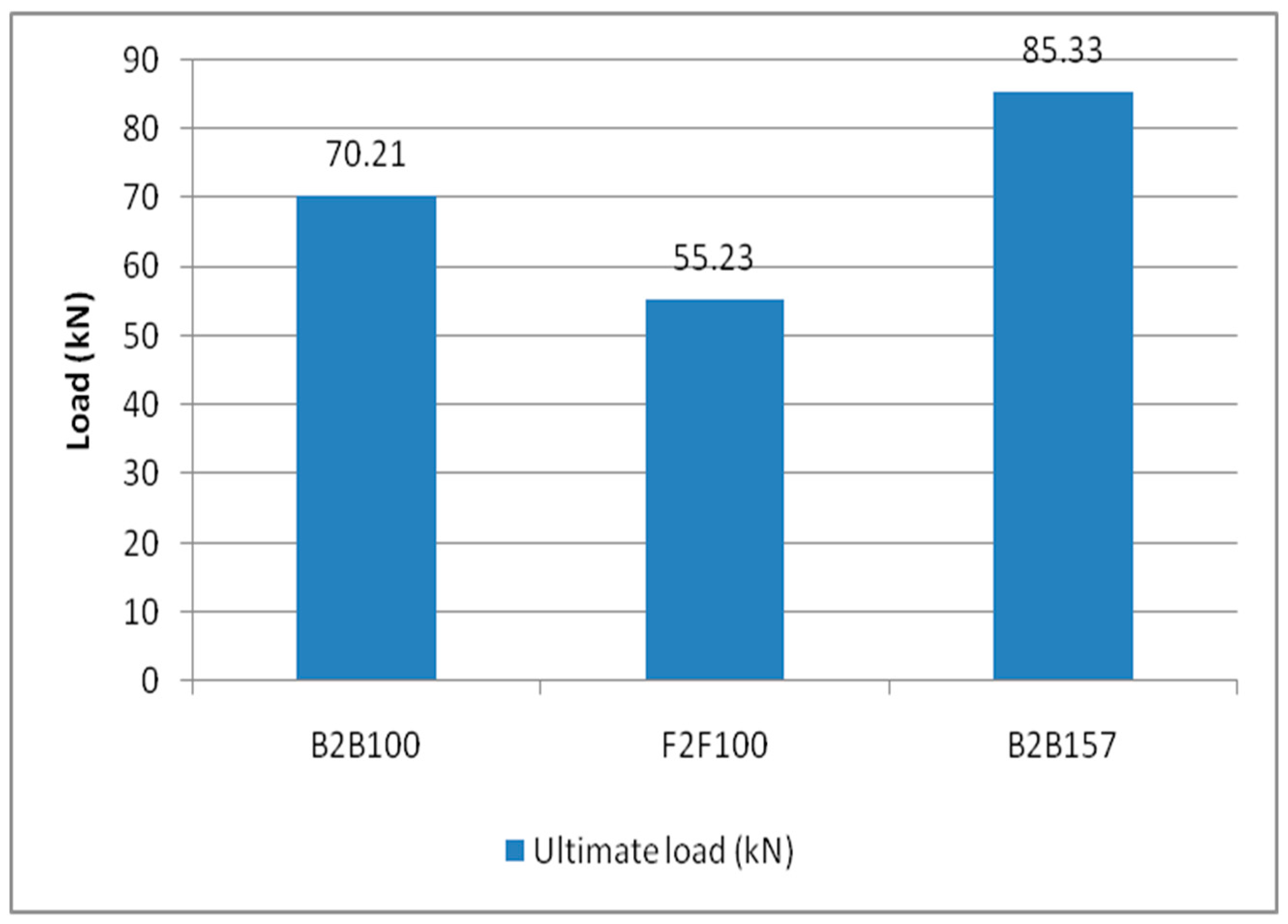
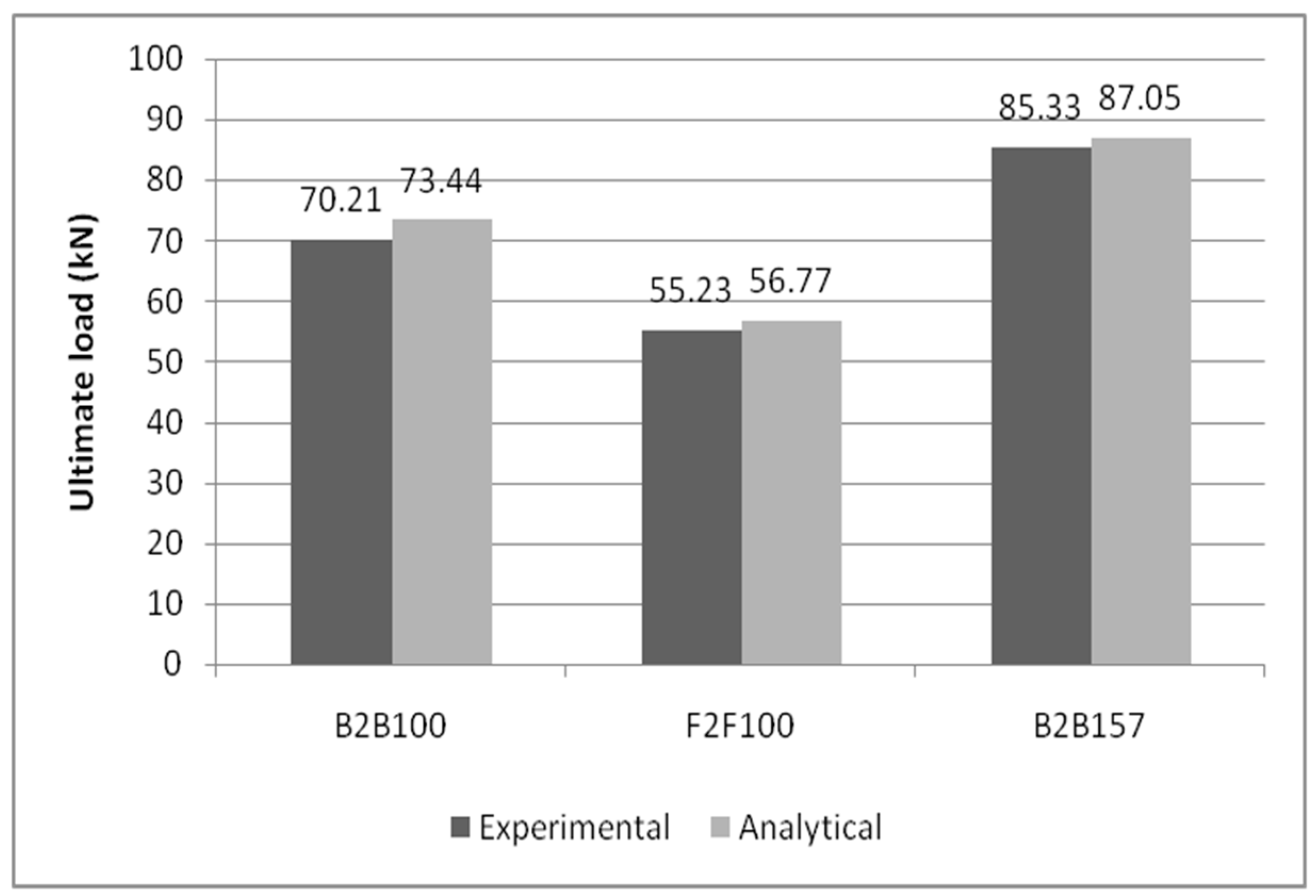
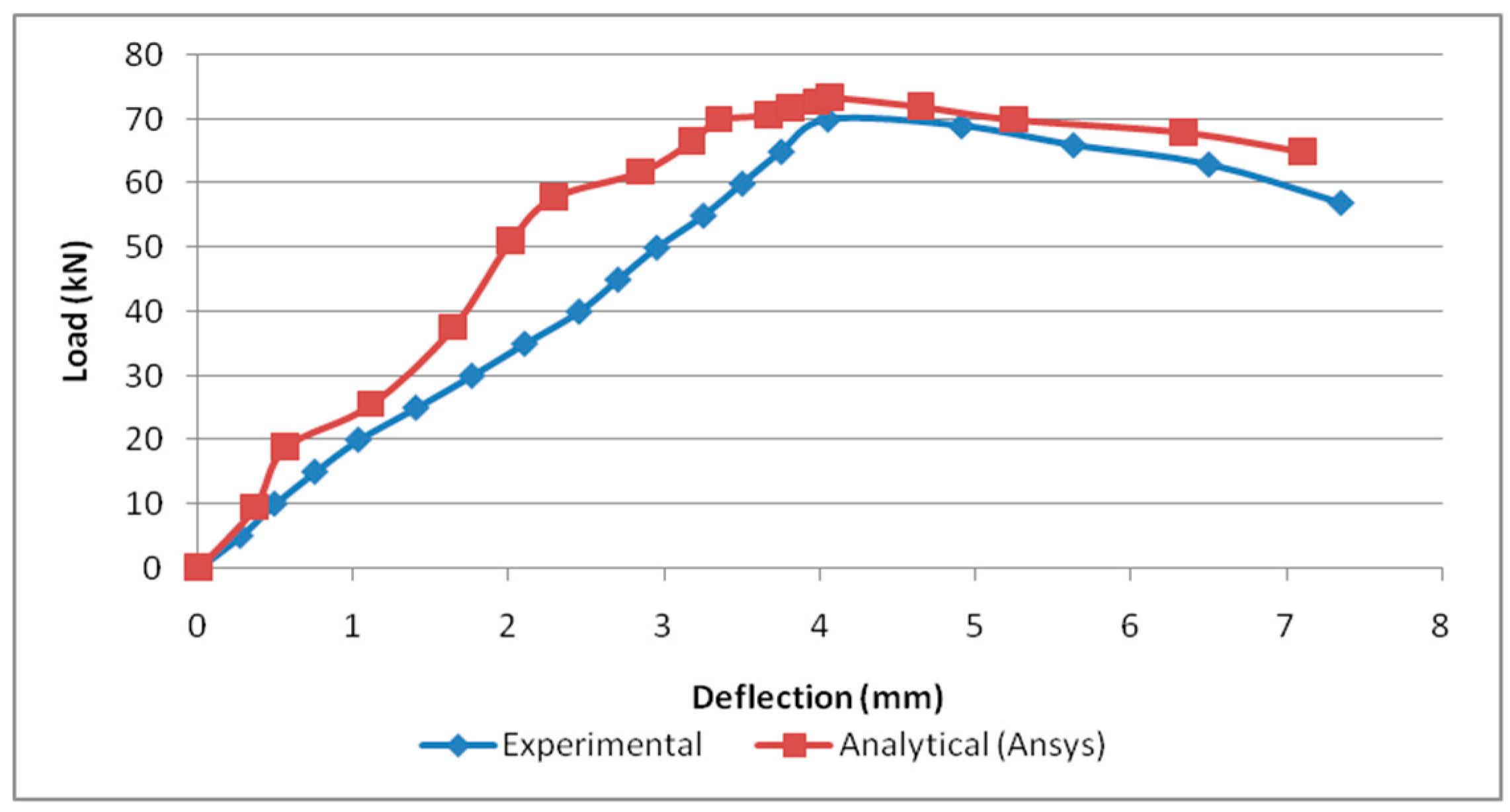
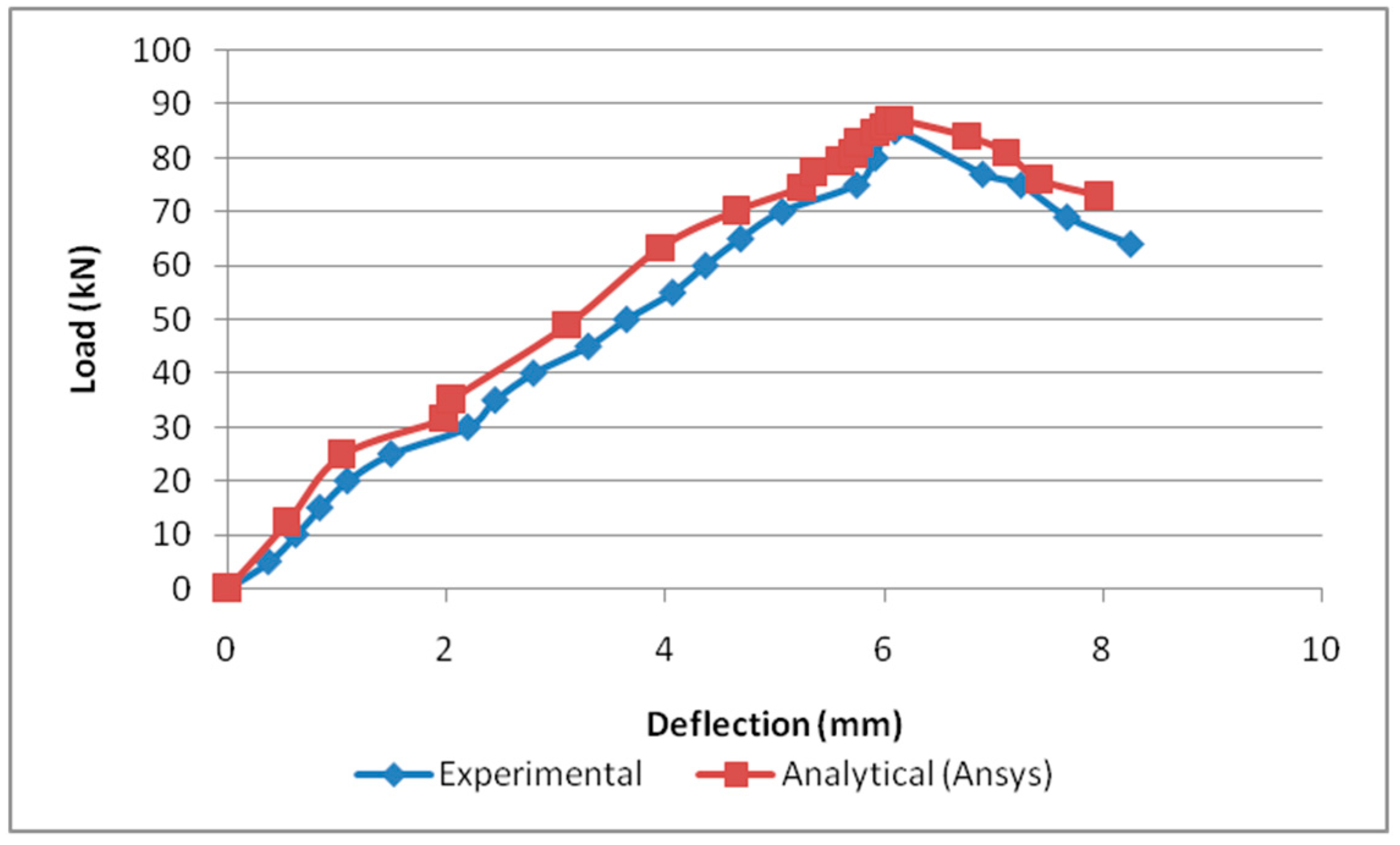
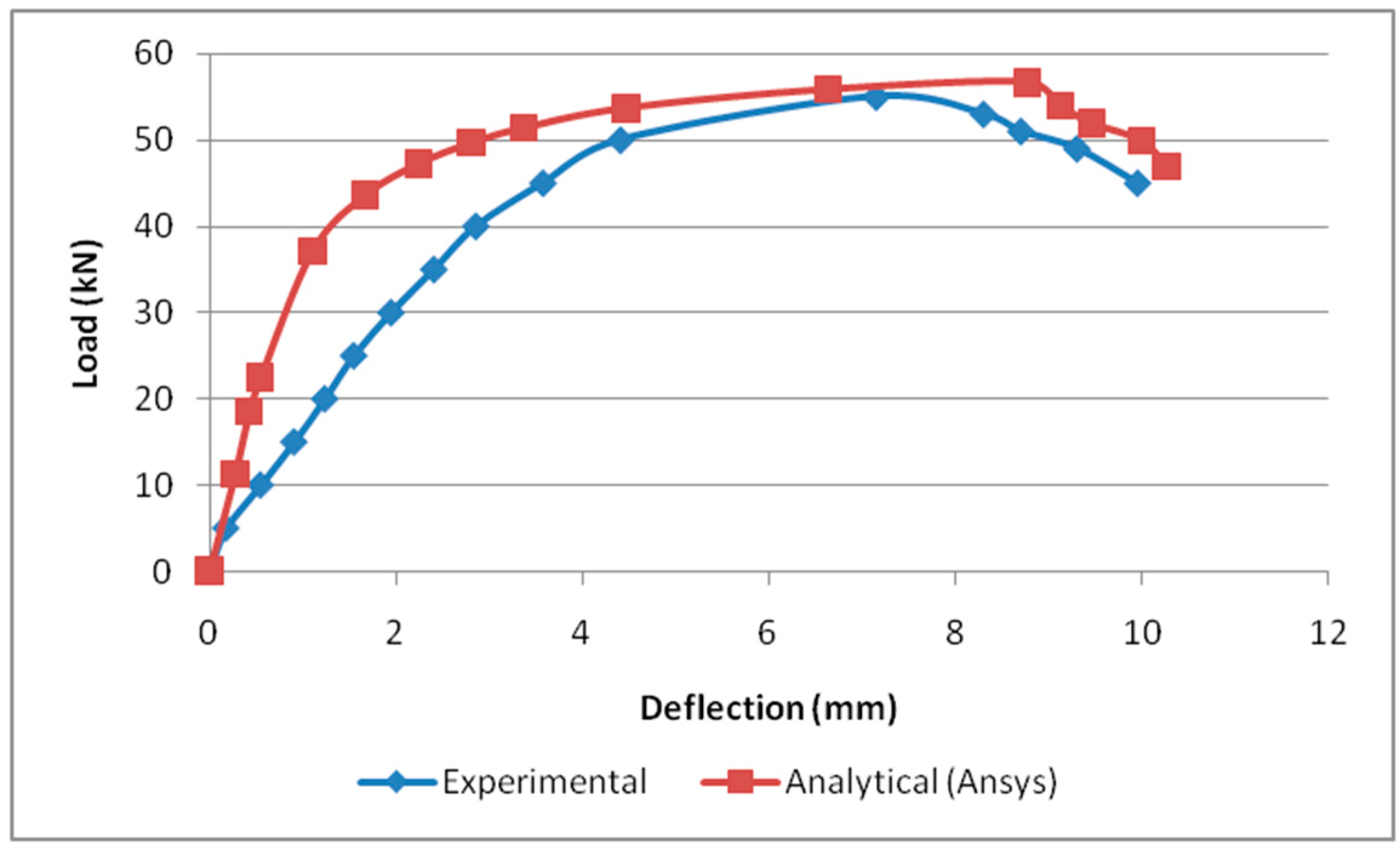
| Specimen | Load Corresponding to Maximum Deflection (kN) PAnsys | % Variation in Strength | |
|---|---|---|---|
| With Respect to B2B100 | Considering C/S Area for F2F100 | ||
| B2B100 | 73.44 | - | - |
| F2F100 | 56.77 | −22.6% | −52.5% |
| B2B157 | 87.05 | 18.6% | - |
| Specimen | Ultimate Load (kN) Experiment | % Variation in Strength | |
|---|---|---|---|
| With Respect to B2B100 | Considering C/S Area for F2F100 | ||
| B2B100 | 70.21 | - | - |
| F2F100 | 55.23 | −21.3% | −51.7% |
| B2B157 | 85.33 | 21.6% | - |
| Specimen | Load Corresponding to Max Deflection (kN) PANSYS | % Variation in Strength (Analytical) | Ultimate Load (kN) PEXPERIMENT | % Variation in Strength (Experimental) |
|---|---|---|---|---|
| B2B100 | 73.44 | - | 70.21 | - |
| F2F100 | 56.77 | −22.6% | 55.23 | −21.3% |
| B2B157 | 87.05 | 18.6% | 85.33 | 21.6% |
Publisher’s Note: MDPI stays neutral with regard to jurisdictional claims in published maps and institutional affiliations. |
© 2022 by the authors. Licensee MDPI, Basel, Switzerland. This article is an open access article distributed under the terms and conditions of the Creative Commons Attribution (CC BY) license (https://creativecommons.org/licenses/by/4.0/).
Share and Cite
Sujitha, R.; Sunmathi, N.; Manikandan, R.K.; Arunprasad, J.; Rajkumar, S.; Sharma, S.; Sharma, K.; Li, C.; Tag Eldin, E.M. Analytical and Experimental Study on Cold-Formed Steel Built-Up Sections for Bending. Materials 2022, 15, 7140. https://doi.org/10.3390/ma15207140
Sujitha R, Sunmathi N, Manikandan RK, Arunprasad J, Rajkumar S, Sharma S, Sharma K, Li C, Tag Eldin EM. Analytical and Experimental Study on Cold-Formed Steel Built-Up Sections for Bending. Materials. 2022; 15(20):7140. https://doi.org/10.3390/ma15207140
Chicago/Turabian StyleSujitha, R., N. Sunmathi, R. K. Manikandan, J. Arunprasad, S. Rajkumar, Shubham Sharma, Kamal Sharma, Changhe Li, and Elsayed Mohamed Tag Eldin. 2022. "Analytical and Experimental Study on Cold-Formed Steel Built-Up Sections for Bending" Materials 15, no. 20: 7140. https://doi.org/10.3390/ma15207140
APA StyleSujitha, R., Sunmathi, N., Manikandan, R. K., Arunprasad, J., Rajkumar, S., Sharma, S., Sharma, K., Li, C., & Tag Eldin, E. M. (2022). Analytical and Experimental Study on Cold-Formed Steel Built-Up Sections for Bending. Materials, 15(20), 7140. https://doi.org/10.3390/ma15207140







